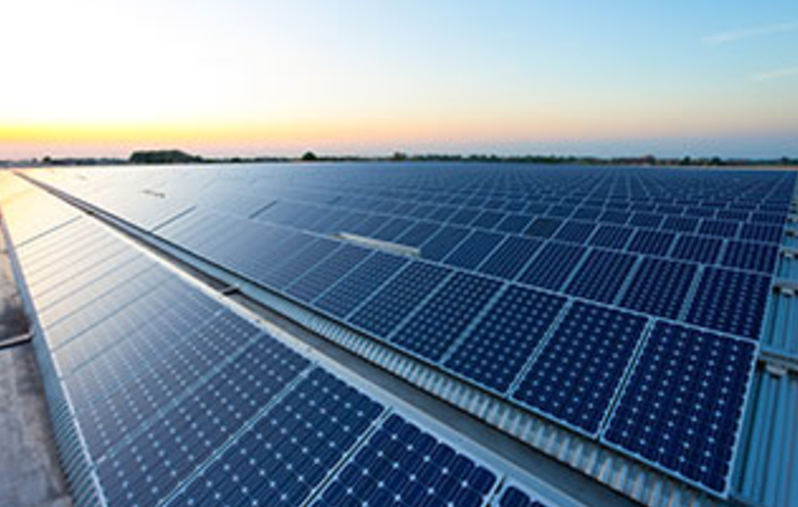China’s global dominance in the clean energy industry has been highlighted in a new report, China 2017 Review: World’s Second-Biggest Economy Continues to Drive Global Trends in Energy Investment, published by the Institute for Energy Economics and Financial Analysis (IEEFA).
IEEFA finds that China ruled supreme in both the building and financing of clean energy technology in 2017.
A key development in the country’s leading role was U.S. President Trump’s decision to back out of the Paris Climate Agreement, a move, the report’s authors say, that led to China’s “quick reaffirmation” of its emissions-reduction pledge and in installing renewables capacity in new markets.
“The clean energy market is growing at a rapid pace and China is setting itself up as a global technology leader while the U.S. government looks the other way,” says Tim Buckley, co-author of the report and IEEFA’s director of energy finance studies.
He adds, “Although China isn’t necessarily intending to fill the climate leadership void left by the U.S. withdrawal from Paris, it will certainly be very comfortable providing technology leadership and financial capacity so as to dominate fast-growing sectors such as solar energy, electric vehicles and batteries.”
In addition to a reorganization of its large state-owned power generators in 2017, in a bid to move Chinese power companies away from reliance on coal to renewables, a significant driver of China’s success is said to be its Belt and Road Initiative (BRI), a development strategy introduced in 2013 by President Xi Jinping.
“The initiative already has driven US$8 billion of solar equipment exports from China and helped China become the number one exporter of environmental goods and services, overtaking the U.S. and Germany,” state the report's authors.
IEEFA adds that the list of large overseas clean energy projects for 2017 is even greater than the prior year’s list. It says the total for large projects, which are valued at US$1 billion or more, exceeds $44 billion, compared to $32 billion in 2016.
To support its expansion plans, China has access to major financial institutions, including the Asian Infrastructure Investment Bank (AIIB), the New Development Bank (NDB) and the dedicated Silk Road Fund.
A number of the world’s largest commercial banks and “policy banks” also act as the financial arm of China’s foreign policy. “The previous backing of the policy banks for coal projects overseas is set to change going forward as the world turns toward renewables,” says IEEFA.
Solar dominance
In addition to overseas clean energy funding, China also dominates the solar manufacturing scene, with Chinese companies accounting for 60% of global solar cell production.
“… China’s solar manufacturing leadership was cemented in 2017. The first half of 2017 saw an increase in global manufacturing capacity expansion announcements over the second half of 2016. Geographically, the new capacity expansion announcements were more heavily weighted toward China than in 2016,” says IEEFA.
It finds that China accounted for 70% of planned expansions last year, while Chinese companies “featured heavily” in overseas solar projects.
Overall, in 2016, China dominated renewable energy installations, responsible for around 68 GW, or 41% of the 165 GW installed globally. In comparison, the U.S. added 24 GW, and the EU, 21GW. Solar drove these figures.
While final installation figures for 2017 are still to be announced, it is clear China installed around 50 GW, a world record for both the country and the global solar industry.
Based on this, China has already met its 2020 target of installing 110 GW of solar. According to the IEEFA, the China National Renewable Energy Centre is now recommending a new target of 200 GW.
Looking ahead, China is expected to continue to dominate the renewable energy landscape for the foreseeable future. In its 2017 renewable energy installation forecast to 2022, the International Energy Agency sees 42% of all solar capacity being developed in China over the next five years.
Battery expansion
While Tesla grabs most of the battery headlines with its 35 GWh of production, IEEFA says it will soon be usurped by the growing Chinese lithium-ion capacities, which are, according to Bloomberg New Energy Finance (BNEF), expected to reach 121 GWh by 2020.
Leading the way is Contemporary Amperex Technology Ltd (CATL), said to be China’s fastest growing battery maker.
“In 2016 CATL produced 7.6 GWh of batteries but intends to expand and produce more than Tesla by 2020, potentially making CATL’s plant the largest battery factory in the world,” says IEEFA. It already has supply agreements in place with BMW and Volkswagen.
The company reportedly overtook BYD to become the biggest seller of batteries in China in 2017, having sold over 5 GWh in H1. A $2 billion IPO is planned for CATL, in a bid to fund its goal of becoming the world’s largest supplier of EV batteries.
This content is protected by copyright and may not be reused. If you want to cooperate with us and would like to reuse some of our content, please contact: editors@pv-magazine.com.




3 comments
By submitting this form you agree to pv magazine using your data for the purposes of publishing your comment.
Your personal data will only be disclosed or otherwise transmitted to third parties for the purposes of spam filtering or if this is necessary for technical maintenance of the website. Any other transfer to third parties will not take place unless this is justified on the basis of applicable data protection regulations or if pv magazine is legally obliged to do so.
You may revoke this consent at any time with effect for the future, in which case your personal data will be deleted immediately. Otherwise, your data will be deleted if pv magazine has processed your request or the purpose of data storage is fulfilled.
Further information on data privacy can be found in our Data Protection Policy.